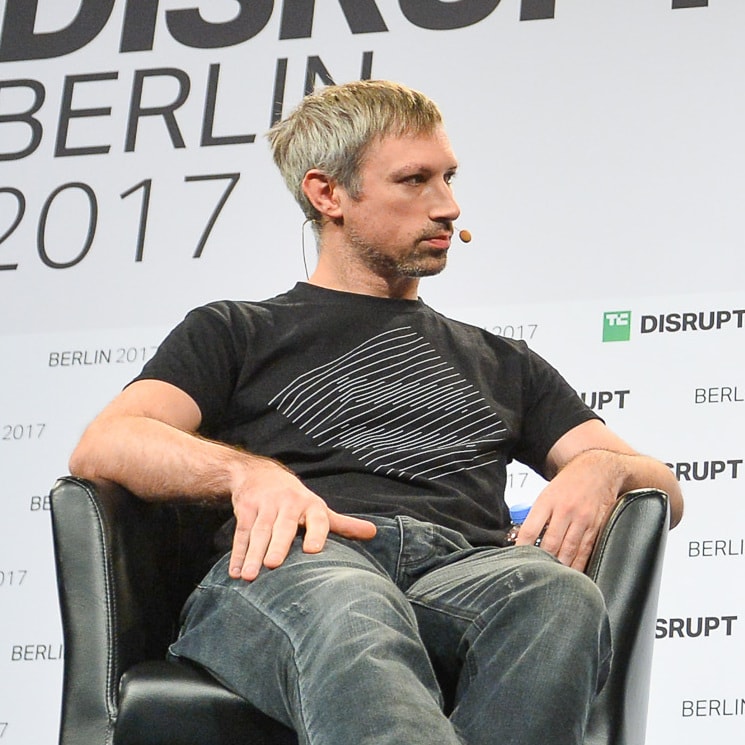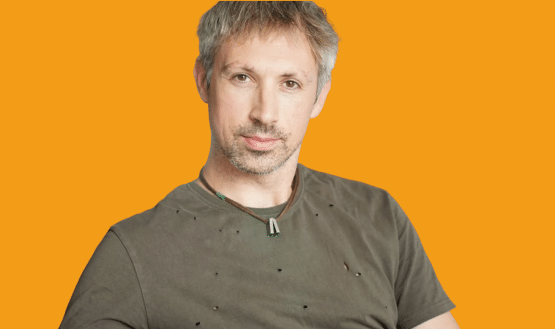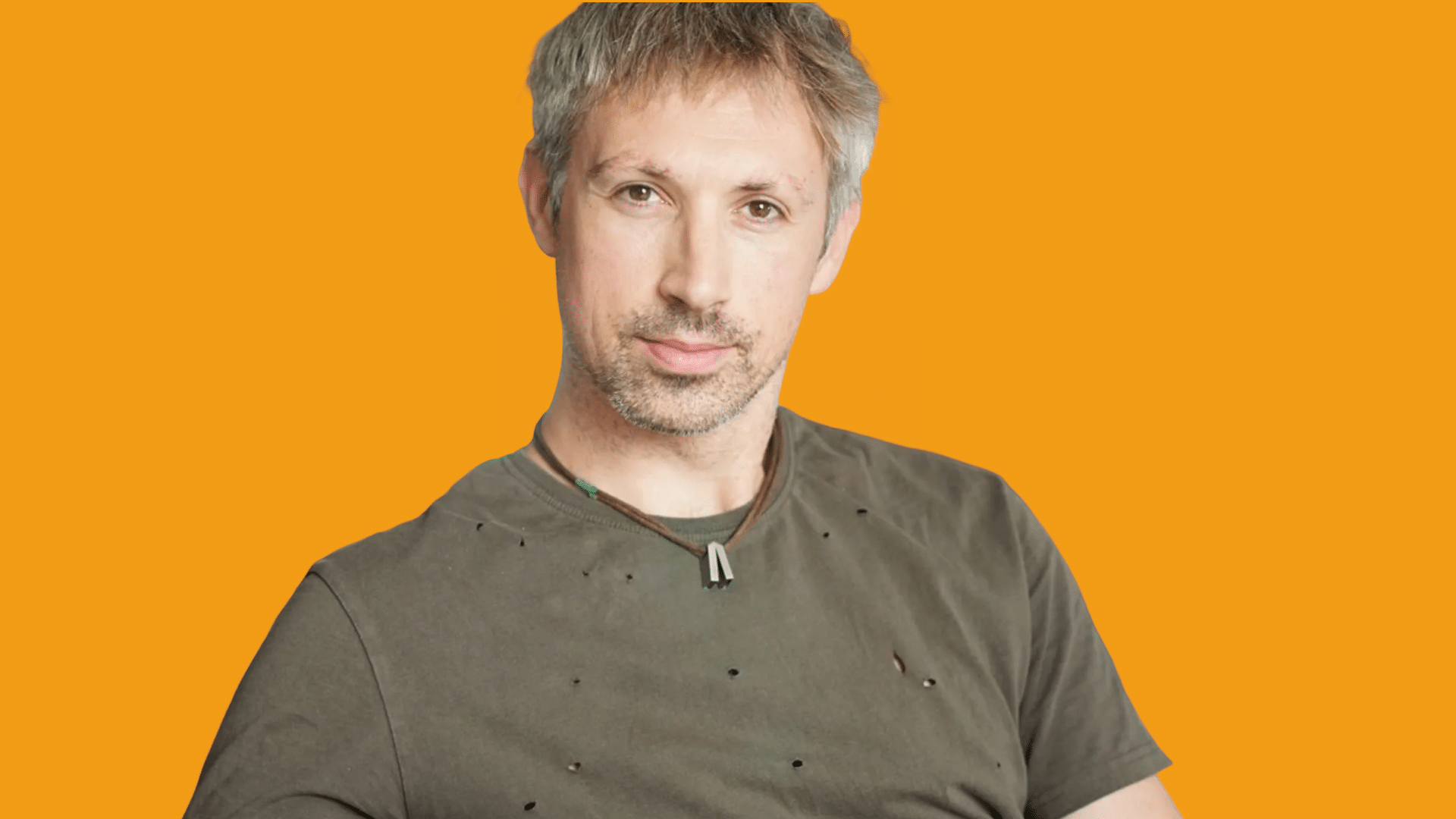On this Page:
The net worth of Gavin Wood, one of the pioneering founders of Ethereum, is estimated to be around $450 million as of September, 2024. The British developer, innovator, and serial entrepreneur is a prominent figure in the blockchain landscape owing to the numerous innovative projects he has built in the cryptocurrency space. Wood is one of the most prominent figures of web3, a term he coined in 2014.

Wood’s work on Ethereum was nothing short of essential for the project. He developed Solidity, a programming language that allows developers to build smart contracts on Ethereum. Today, most projects across the crypto and blockchain landscape have adopted the programming language.
Likewise, Wood established the Web3 foundation in 2017 to champion the push for a decentralized internet. This idea led to the development of Polkadot, the blockchain network of networks founded in 2016, and Kusama, a deployment platform for Polkadot, founded in 2019. The central goal of both projects is to push for the global adoption of web3.
In this YouTube video, Wood gives the details about how purchasing a computer from his neighbor helped him learn his first programming language.
While at high school, he began to write software. His passion for programming encouraged him to learn more at the University of York. He enrolled at the University of York where he studied computer systems and software engineering. He graduated from the institution in 2002 with a Master of Engineering. Also, he earned a Ph.D. in Music Visualization for Human-Computer Interfacing from the University of York in 2005.
Shortly after the completion of his Ph.D. program, Wood had a short stint with Microsoft as a research scientist. While in this role, he worked on projects both inside and outside of Microsoft. Some of these projects include a smart text contract editor for law firms called OxLegal, and the first C++ language workbench, Martta.In 2011, while working as a technical director at Lancaster Logic Response, Wood created a smart lighting controller for one of London’s top nightclubs. He would later come across Bitcoin for the first time but wasn’t convinced about its potential. In a revelation, he talked about how he focused heavily on the currency aspect of Bitcoin instead of the innovative technology behind it. Wood missed the opportunity to become one of the early adopters of Bitcoin, but he wouldn’t make that mistake again.
Ethereum
In 2013, Wood revisited the Bitcoin whitepaper and realized the rich opportunities embedded in the blockchain. The same year, he met Vitalik Buterin, the visionary behind Ethereum, through a mutual friend. At that point, Buterin had only written the Ethereum white paper and needed help to make it a reality.Before meeting Buterin, Wood was already working on the development project OxLegal. However, he decided to join Ethereum and met other early Ethereum contributors at a North American Bitcoin Conference in Miami. During the conference, Buterin unveiled Ethereum, and Wood became the CTO.In the video below, Wood and Buterin give a brief explanation of how Ethereum takes blockchain currency a step further.
In January 2014, Wood designed the first Ethereum client called PoC-1 (Proof of Concept 1). He also designed the Ethereum Yellow paper which marked the first formal specification of the blockchain protocol. The paper explained the basic specifications of the Ethereum Virtual Machine or EVM. Likewise, the British software engineer also designed Solidity, a programming language that allows developers to create smart contracts on the Ethereum network.
The same year, the Ethereum team endured a significant setback. Then, multiple prominent early contributors, including Charles Hoskinson and Jeremy Wood, left the project due to a disagreement on its future. Hoskinson and Jeremy Wood later founded Cardano, a decentralized alternative to Ethereum, and IOHK, a blockchain infrastructure research and engineering company.
After the departure of Hoskinson and Jeremy Wood, the remaining members of the team established the Ethereum Foundation. With this foundation, they organized an online public crowd sale of the Ethereum token between July and August 2014.
Transition to EthCore (Parity) and Focus on Web3
In 2016, Wood joined other software engineers like Dr.Jutta Steiner, Ken Kappler, and Dr. Aeron Buchanan to develop EthCore. The company focuses on providing infrastructural support for Ethereum developers. One of the offshoot projects developed through EthCore is Parity, an Ethereum client written in the Rust programming language to assist developers in running nodes on the network.
Later, Wood sought financial backing for EthCore through pre-seed funding. With the new funding, it was able to fund the development of its Parity Wallet product. Parity Wallet is a multi-signature (or multi-sig) crypto wallet that works with over 1,000 tokens and requires more than a private key to send and store crypto assets. Wood, alongside other executives, also renamed EthCore to Parity Technologies. With the rebranding, the Ethereum co-founder expanded the company’s focus to providing infrastructural support for other platforms.
Parity Technologies
Under Parity Technologies, Wood designed Substrate, a development framework that provides developers with technology infrastructure to build blockchain and decentralized apps. In 2018, he became the Chief Web officer of Parity Technologies. Likewise, Gavin Wood retained a significant portion of the firm’s shares, which eventually made his net worth soar.
Driven by his vision for a decentralized internet, Wood co-founded Grid Singularity with the support of Ewald Hesse, Ana Trbovich, and other notable blockchain experts. The initiative is an open internet, decentralized energy data exchange platform that leverages the support of blockchain.
He also established the Web3 Foundation in 2017. The foundation focuses on nurturing applications for decentralized web software protocols. As part of his efforts to achieve a truly decentralized web, Wood, through the Web3 Foundation, initiated research into the Whisper protocol. In 2020, the web3 advocate became the CEO of Parity Technologies.
Kusama and the Web3 Foundation
In 2019, the Web3 Foundation launched the Kusama network. Kusama is labeled as a “cousin” of Polkadot because it serves as a pre-production platform for the network. Primarily, upgrades to the Polkadot network are first implemented in Kusama to test their effectiveness.
However, In October 2022, Wood stepped down as the CEO of Parity Technologies. While discussing the circumstances that led to his departure, Wood said that he was not satisfied serving as the company’s CEO. He explained how he wanted a different role that would let him work “asynchronously.” Wood retained the title of Chief Architect.
The Development of Polkadot
Through the Web3 Foundation, Wood began to lay the foundation for the development of Polkadot and he finally published the Polkadot white paper in 2016. Polkadot later emerged as the flagship protocol of the Web3 Foundation. Other prominent developers like Robert Habermeier and Peter Czaban also contributed to the development of Polkadot.
Polkadot is an open-source, shared multichain protocol that links and protects a network of specialized blockchains. The network helps to facilitate the cross-chain transfer of data and assets of various types, ensuring that blockchains are interoperable with one another. With the focus on supporting a decentralized system, Polkadot is controlled by users, with a simplified structure to aid the seamless creation of new solutions. The network runs on the native token $DOT, a popular altcoin.
Fundraising for an ICO
Wood raised more than $144.3 million to complete the development of Polkadot in an Initial Coin Offering (ICO) around October 2017. The British developer organized another private sale for Polkadot, raising another $43 million in 2020. The network’s genesis block was released in May 2020 alongside its native token, DOT.
On May 4, 2022, Polkadot launched a cross-chain communication protocol, XCM. The solution was developed to reduce cyber-attacks through the existing bridging mechanisms. Through XCM, Wood aims to boost Polkadot’s multi-chain ecosystem. It is designed in a way that ensures the safety of users’ funds during cross-chain transactions.
Moonbeam and Other Projects
In 2022, as part of the commitment to improve the Polkadot ecosystem, Moonbeam integrated the popular oracle service Chainlink. Moonbeam is a project that allows developers to build their ideas on Polkadot. With the new integration, developers on the Polkadot network are provided access to all kinds of market data aggregated from numerous platforms and exchanges.
Meanwhile, at an event held in Buenos Aires on June 29, 2022, Wood indicated that the governance model of Polkadot would take a new shape. The transformation, which was dubbed Gov2 or OpenGov, allows developers to initiate proposals at their preferred time and as often as they wish. In his submission, Wood likened the upgrade to the process of carrying out new transactions on Polkadot.
As a part of its commitment to ensuring a safer crypto and blockchain space, Polkadot launched an anti-scam bug bounty program. With the initiative, the platform leverages the expertise of blockchain security experts within its community to detect vulnerabilities that can give room to cyber attacks. In return, Polkadot set aside a certain amount of DOT to pay them for their efforts.
During a developer conference in December 2022, Wood provided insights into various future upgrades for the Polkadot network. In an impromptu keynote address at the Sub0 tech conference, Wood emphasized the advancement of XCM. He described XCM as a cross-channel and cross-consensus messaging protocol. Also, he spoke about OpenGov, which he referred to as a new agile, decentralized governance process for Polkadot.
The video below details Wood’s unplanned but informative address to the Sub0 crowd.
In November 2022, The Web3 Foundation argued that the native token of the Polkadot protocol, DOT, isn’t a security. The disclosure surfaced in response to the clampdown on cryptocurrency firms by the United States Securities and Exchange Commission (SEC). The Web3 Foundation reiterated this with the below Tweet on X in January 2023. If it is deemed a security by the SEC and the courts agree, The Web3 Foundation could be in hot water for selling unregistered securities.
Gavin Wood’s Cryptocurrency Advocacy
Gavin Wood’s entire career has solidified him as one of the pathfinders in the crypto and blockchain space. His meeting with Vitalik Buterin ignited the development of Ethereum and its underlying tech.
Being a proficient programmer, it wasn’t really difficult for him to understand the rudiments of crypto and its far-reaching potential. He discovered that blockchain is not only a valuable tool for financial transactions but also an efficient vehicle to foster decentralization of the internet. Later, his mutual acquaintance with Buterin made it possible for him to meet other Ethereum co-founders in Miami.
In this video Wood describes the game-changing nature of blockchain.
The Importance of Decentralization
It wasn’t long before Wood coined his ideology about what a true blockchain should look like. According to him, the major tenet of blockchain must be decentralization, and any deviation from that would affect its use cases. His strong advocacy for a truly decentralized ecosystem positioned him as a strong proponent of web3.
Wood is even more influential in the crypto sphere than most community members realize. He was even credited as the architect behind the term “web3.” He described web3 technologies as the future of the internet with optimal data security, decentralization, scalability, and user privacy. Wood has reservations about the monopolistic nature of web2 bigwigs like Google and Facebook and believes the widespread adoption of web3 will knock them down.
In this video, Wood explains the core differences between web2 and web3 and why he thinks web2 is a dying technology.
Ethereum and Beyond
The pursuit of the true promise of blockchain, as illustrated by Buterin’s white paper, convinced Wood to join the project. Even though Bitcoin has long been the largest and most popular cryptocurrency, Wood has always been optimistic that Ethereum could be a better alternative. He described the project as “one computer for the entire planet.”
Wood explains his “one computer” philosophy of Ethereum in the video below.
Wood might have left Ethereum, but his contributions to its success cannot be ignored. He left because he felt Ethereum and other team members had abandoned what he felt was the promise of a truly decentralized blockchain. His stance on decentralization as the major cornerstone of a good blockchain ecosystem is non-negotiable. This explains why he had to exit the project and why his development of Polkadot was “a bet against maximalism.”
Wood sees Polkadot, one of the flagship projects of the foundation, as an opportunity to get away from “a patchwork of independent and isolated legal systems of the internet.” He said, “We were just kind of thinking how we could maybe create the next version of Ethereum if we sort of had a greenfield to design upon.”
Through Polkadot, Wood has continued to bring his philosophies about how a true blockchain should run into reality. Today, it is safe to regard the project as one of the biggest blockchain and web3 platforms. Both DOT and Ethereum are listed in the top 10 cryptocurrencies by market capitalization.
Apart from the creation of Polkadot, Wood has other notable blockchain innovations under his belt. His commitment to disrupting the conventional structure of the web encouraged him to facilitate the development of Substrate, Kusama, Parathreads, and several others. Substrate and Kusama have been pivotal to Polkadot’s success in recent years.
Wood and Vitalik: A Successful Pairing
Despite leaving Ethereum, Wood and Vitalik are reportedly still friends, working together to advance the world of blockchain and cryptocurrency. In one of his recent interviews, Wood confirmed the blossoming relationship between him and Vitalik.
Wood has built a strong reputation for himself as one of the most prominent leaders in the industry. He has more than 400,000 followers on X and Medium, where he posts content relating to his insights about developments in the crypto and blockchain space.
Beyond posting articles on social media, Wood is also a regular face at numerous tech and economic conferences across the globe. Around 2022, he spoke at the World Economic Forum in the Swiss Alpine resort of Davos. There, he told investors to be aware of what is driving their holdings. His statement was in reaction to the bear market that ravaged the industry that year.
He said; “I would hope that people pay more attention to what is belying the currency name when they get involved in a community, ecosystem, economy. The technology cannot prevent people from making mistakes but can help those who want to understand better the facts of the world, what they’re buying.”
Crypto and NFT Holdings of Gavin Wood
Wood has remained tight-lipped about the overall value of his crypto holdings. But there’s no doubt that he keeps a diversified portfolio with multiple cryptos, likely worth millions of dollars.
With this, it is reasonable to believe that his wealth has been greatly influenced by his crypto holdings. For instance, in 2022, a crypto bear market drastically reduced the value of numerous cryptocurrencies. While Wood’s exact crypto holdings are not known, this is likely to have severely impacted his net worth.
At the peak of the ongoing war in Ukraine, he offered to donate $5 million worth of DOT to help Ukraine respond better to the crisis. The official Twitter handle of the embattled country solicited crypto donations, particularly in Bitcoin, Ethereum, and Tether.
However, Wood wasn’t satisfied that he had to make the donation in other crypto assets and therefore offered to personally contribute $5 million if the country accepted DOT. His comment didn’t sit well with other members of the crypto community on X.
Because Wood is quite a private person, information about his NFT holdings is not in the public domain. Nonetheless, in recent years, he leveraged his Polkadot and Kusama projects to aid widespread access to NFTs. Both projects were the first blockchains to allow multi-chain NFTs. This allows NFT users to transfer their tokens from one chain to another with ease.
Gavin Wood’s Net Worth – Our Verdict
R. Buckminster Fuller famously said, “You never change things by fighting the existing reality. To change something, build a new model that makes the existing model obsolete.” Gavin Wood’s achievements in the cryptocurrency space have been nothing short of a clinic in this philosophy. Inspired by Bitcoin, he challenged its model by co-founding Ethereum, combining the ideals of decentralized cryptocurrencies with a ready-made development platform.At every juncture in his career, he was never satisfied with the status quo, always releasing something new and better that challenged the last project he worked on. As a result, he has established a reputation both as a founder and an innovator. Being an adopter in the crypto space allowed him to get in early with currencies like Ethereum and DOT. As a result, when the value rises, his portfolio benefits, and his ability to fund new projects is fueled.FAQs
When did Gavin Wood develop Kusama?
Gavin Wood developed Kusama in 2019.
Who was the first person to use the term 'web3?'
Gavin Wood is credited as the person who coined the term 'web3.'
What is Gavin Wood's current net worth?
As of September 2024, the net worth of Gavin Wood is estimated at $450 million.
How much did Wood donate to Ukraine’s war effort?
He donated $5.8 million in DOT tokens to Ukraine.
Who was Gavin Wood’s main collaborator when developing Ethereum?
Wood collaborated with Vitalik Buterin at Ethereum.
What organizations did Wood found after leaving Ethereum?
Wood founded Polkadot and the Web3 Foundation.

